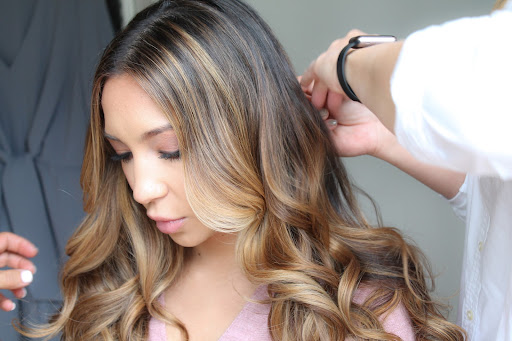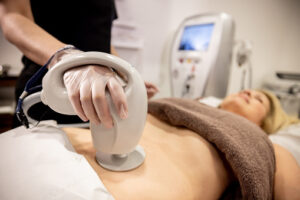There are various options available if you’re looking for a non-surgical way to achieve a more lifted, smooth appearance on the lower half of your face. A non-surgical facelift is a minimally invasive procedure that can help improve the appearance of your face without the need for surgery. Today, we’ll fill you in on everything you need to know about this option, including how they work, how long you can expect your results to last, and where to go for a non-surgical facelift in West Palm Beach.
What is a Non-Surgical Facelift?
We’ll start by answering the question, “what is a non-surgical facelift?” Of course, it’s a way to lift the skin on your face without surgery, but there are several different options for doing so.
Injectable Fillers
Injectable fillers are one of the most coveted types of non-surgical facelifts. This procedure involves injecting a substance into the skin that fills in wrinkles and lines. The most popular type of injectable filler is hyaluronic acid, which is found naturally in the body.
(Learn more about mid-face fillers here)
Botox
Botox is another popular non-surgical facelift option. This procedure involves injecting a substance into the muscles of the face to relax them. Botox can help to reduce the appearance of wrinkles and lines. In addition, it can also help to lift the eyebrows and jawline.
Botox has proven to be a safe and effective non-surgical facelift option, with results lasting for up to six months.
Laser Resurfacing
Laser resurfacing is another type of non-surgical facelift that can help improve your skin’s appearance. This procedure uses a laser to remove the top layer of your skin, which can help to improve the appearance of wrinkles, lines, and other blemishes.
There are many different types of laser treatments available, and the kind of treatment you receive will depend on your specific needs.
PDO Thread Lifts
One of the more recent and promising trends in non-surgical facelifts involves the use of PDO threads to lift and tighten facial skin. This procedure involves inserting threads made of polydioxanone (PDO) under the skin. These threads are then pulled up and secured to help to lift and tighten the skin on the face, resulting in a more youthful appearance.
How Does a Non-Surgical Facelift Work?
Now that you know a little bit more about non-surgical facelifts, let’s take a closer look at PDO thread lifts in particular and how they work.
We have a whole post on PDO thread lifts here, and it includes this explanation of how they work:
“The PDO Thread Lift technique uses Novathreads, which are absorbable threads made of polydioxanone (PDO). Novathreads are 100 percent dissolvable and have been used in a multitude of surgical specialties for the last 50 years. These specialties range from cardiovascular surgery, thoracic surgery, gynecological surgery as well as plastic surgery. Anushka’s Cosmedical Centre uses PDO Threads to tighten the skin by creating an inflammatory response, causing the production of new collagen. The inflammatory response triggered by the threads can also cause fibrosis, which tightens the tissue. The threads come in different thicknesses and lengths. Dr. Bonnie Marting D.N.P., ANRP, helps you choose the right size threads depending on what type of improvement you would like to have. When the threads are placed properly, patients will see an instantaneous lift of the loose facial skin and an overall improvement of the turgor and quality of the skin tissue.”
Non-Surgical Face Lift FAQs
Our non-surgical facelift patients come to us with a variety of questions when they’re considering this option. So, next, we’ll go over those questions and their answers to provide you with the information you might be looking for.
How long does a non-surgical facelift last?
One of the most common questions we get about non-surgical facelifts is “how long do they last?” But, of course, the answer to this question will depend on the type of non-surgical facelift you’re getting.
Injectable fillers typically last for six months to a year. Botox typically lasts for three to six months. Laser resurfacing typically lasts for one to two years. And PDO thread lifts typically last for one to two years.
Understandably, facelift results can vary from person to person and will depend on factors such as age, skin type, and lifestyle.
Are there any side effects?
Another common question we get involves potential side effects.
As with any medical procedure, there are risks and potential side effects associated with non-surgical facelifts. However, these risks and side effects are typically minor and temporary—especially compared to more invasive options.
Injectable fillers can cause bruising, swelling, and redness at the injection site. Botox can cause bruising, swelling, and redness at the injection site. Laser resurfacing can cause redness, swelling, and peeling of the skin. And PDO thread lifts can cause bruising, swelling, and pain at the injection site.
Before you undergo the procedure, you must talk to your doctor about the risks and potential side effects of any non-surgical facelift.
How much does a non-surgical facelift cost?
The cost of a non-surgical facelift will vary depending on the type of procedure you’re getting, the number of treatments you need, and the provider you use. Injectable fillers typically cost $500 to $1,000 per treatment. Botox typically costs $200 to $800 per treatment. Laser resurfacing typically costs $1,500 to $3,000 per treatment. And PDO thread lifts typically cost $1,500 to $3,000 per treatment.
What are the benefits of a non-surgical facelift versus a surgical facelift?
There are a few key benefits of non-surgical facelifts when compared to surgical facelifts.
- First, non-surgical facelifts are less expensive than surgical facelifts. This is because they don’t require anesthesia, operating room time, or a hospital stay.
- Second, non-surgical facelifts have fewer risks and side effects than surgical facelifts.
- Third, non-surgical facelifts require little to no downtime, while surgical facelifts typically require two to three weeks of recovery time.
What are the risks of a surgical facelift?
On the topic of non-surgical facelift benefits, let’s also talk about some of the risks more invasive surgical methods pose.
Some of the risks of a surgical facelift include infection, bleeding, bruises, and swelling. Additionally, there is a risk of nerve damage, which can result in numbness or weakness in the face. And finally, there is always a risk of scarring.
These risks are why non-surgical facelifts have become increasingly popular in recent years. They offer many of the same benefits as surgical facelifts but with fewer risks and side effects.
What is the best way to fix my jowls without surgery?
If you’re looking for a way to fix your jowls without surgery, a non-surgical facelift is a great option. As we’ve discussed, there are a few different types of non-surgical facelifts that can help improve the appearance of your jowls, including injectable fillers, Botox, laser resurfacing, and PDO thread lifts. However, PDO threads are particularly effective in lifting and tightening the skin around the jawline to improve the appearance of jowls.
Are thread lifts painful?
There is some pain associated with non-surgical facelifts, particularly PDO thread lifts. However, the pain is usually minimal and can be controlled with over-the-counter pain medication. Additionally, your practitioner can provide you with a local anesthetic to numb the treatment area before the procedure.
Am I a good candidate for a non-surgical facelift?
Most people are good candidates for non-surgical facelifts. However, a few factors may make you a better candidate for surgery, such as advanced age, significant skin laxity, and severe facial asymmetry.
What does a non-surgical facelift do?
A non-surgical facelift can do a lot to improve the appearance of your face. Injectable fillers can add volume to the cheeks, lips, and under-eye area. Botox can smooth out pesky wrinkles and fine lines. Laser resurfacing can improve the texture of the skin. And PDO thread lifts can lift and tighten the skin around the jawline.
What is the best age to have a facelift?
There is no one “best” age to have a facelift. It all depends on your needs and goals for your appearance. For example, if you’re looking to improve the appearance of wrinkles and fine lines, you may benefit from a non-surgical facelift in your 20s or 30s. If you want to add volume to your cheeks or lips, you may benefit from a non-surgical facelift in your 40s or 50s. And if you’re looking to tighten loose skin around your jawline, you may benefit from a non-surgical facelift in your 60s or 70s.
What can I do to prolong the results of my non-surgical facelift?
You can do a few things to prolong the results of your non-surgical facelift. These practices are helpful to follow regardless of the type of non-surgical facelift you’ve received, or if you haven’t received a facelift at all but simply want to take great care of your skin.
First, always follow your doctor’s instructions for post-procedure care. This will help ensure that your skin heals properly and doesn’t become infected. Second, avoid exposure to sunlight and UV rays. This will help prevent your skin from prematurely aging. Third, practice good skin care habits. This means cleansing, exfoliating, and moisturizing your skin daily. And finally, don’t smoke. Smoking can prematurely age your skin and make it more difficult for non-surgical facelifts to achieve their desired results.
(Dermaplaning can also help keep your skin looking its best!)
Learn More Today
If you’re ready to learn more about a non-surgical facelift in West Palm Beach, you’re in the right place. At Anushka Medical Spa, we offer a variety of non-surgical facelift options to help you achieve your aesthetic goals. Contact us today to schedule a consultation.
We look forward to meeting you!










